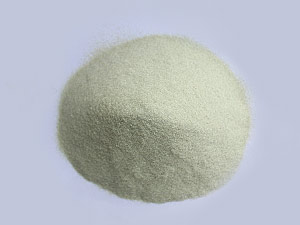
Kyanite is a member of the aluminosilicate series, which also includes the polymorph andalusite and the polymorph sillimanite. Kyanite is strongly anisotropic, in that its hardness varies depending on its crystallographic direction. In kyanite, this anisotropism can be considered an identifying characteristic.At temperatures above 1100 °C kyanite decomposes into mullite and vitreous silica via the following reaction: 3(Al2O3·SiO2) → 3Al2O3·2SiO2 + SiO2. This transformation results in an expansion. so it is a kind of refractory raw materials whose volume will expand in high tempurater condition.
| Molecular formula | AL2(Si04)0 |
| Al2O3 | 53-57 |
| SiO2 | 40 |
| Fe2O3 | 0.6 |
| TiO2 | 1.6 |
| K2O+Na2O | 0.8 |
| Hardness | 5.5-7 |
| transform temperature | 1100-1480 ℃ |
| volume expansion | 16-18 |
| L O I | 1.50 |
| Bulk Density | 3.53-3.65g/cm3 |
| Refractoriness | 1790 |
Characteristics
1.Chemical corrosion resistance
2.High thermal shock mechanical strength
3.Irreversible thermal expansion
Applications
It is the main raw material for the production of unshaped refractory and electric furnace top brick, phosphate non-firing brick, mullite brick and low creep brick, using for steel-making, refractories, glass-making refractories, ceramics coating, glass additive, mullite manufacture and foundry.
Packing







